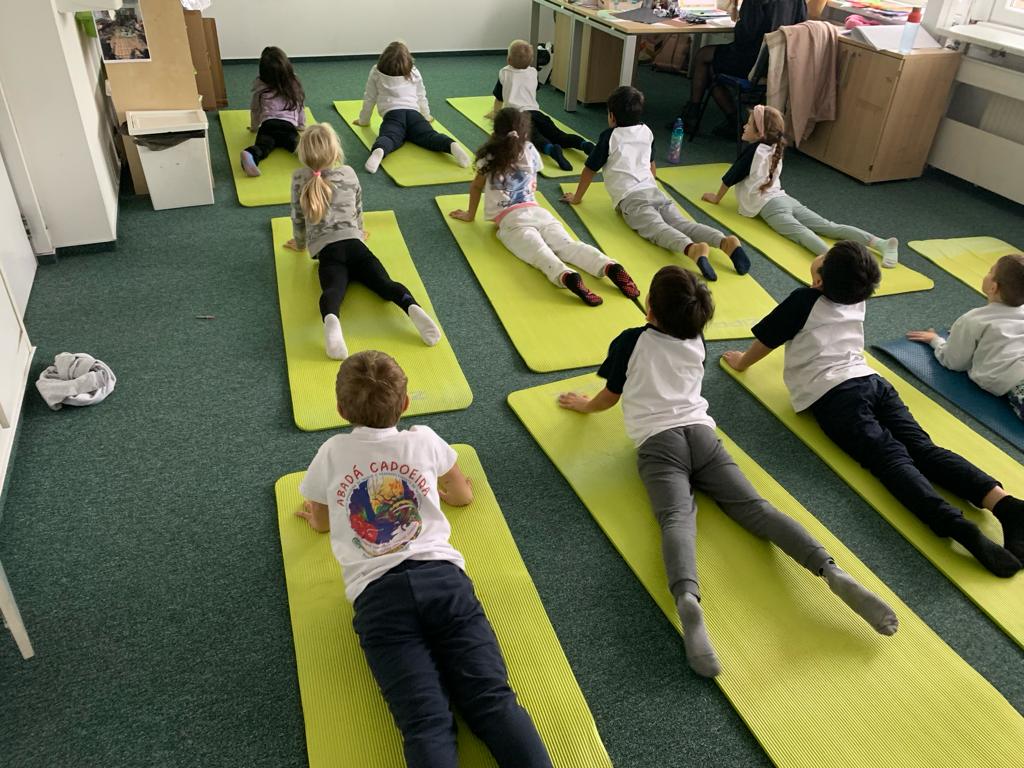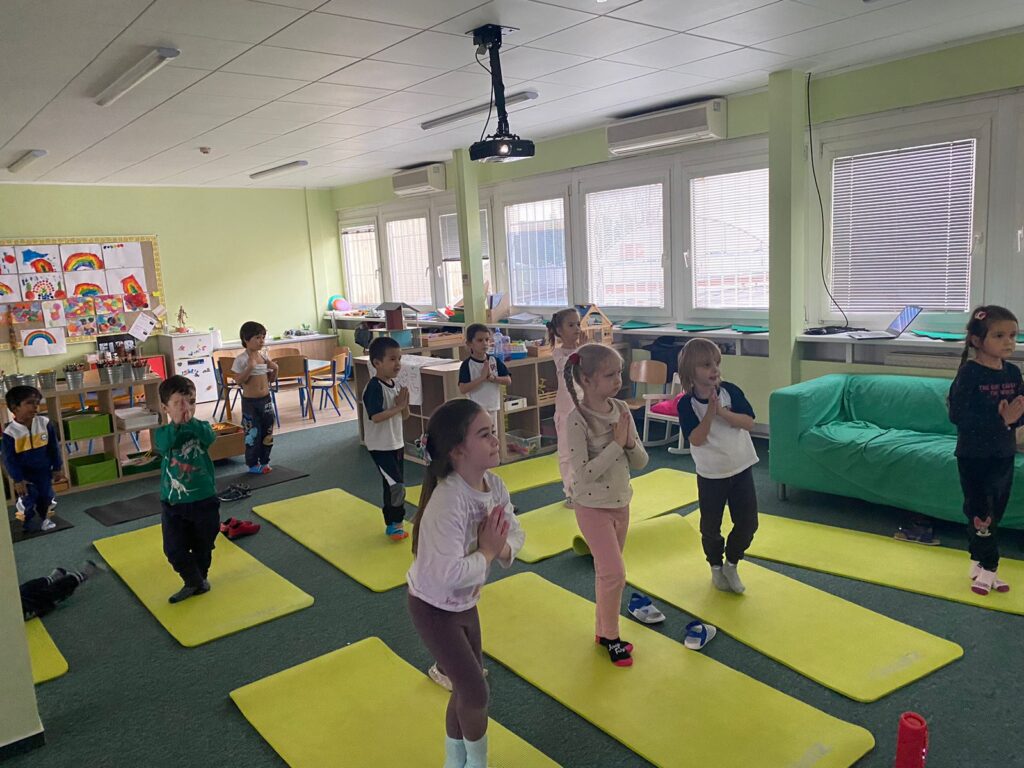Why do we teach Yoga at EISB?
Traditionally, physical education classes have been viewed as sessions where the fastest students win races, those with better swimming skills can demonstrate their prowess in the water, or individuals good at sports can showcase their abilities. However, this mindset has evolved.
As an IB PYP certified school, in our Personal, Social, and Physical Education (PSPE) classes, we approach physical activity as an opportunity to enhance the holistic development of the child. We do not just focus on developing basic motor skills or mastering an extensive list of sports; rather, we understand that the personal, social, and emotional development of the child is essential for their present and future. During PSPE classes, we address topics such as communication and its various forms, basic knowledge of the human body, and the importance of emotional well-being.
Specifically, in addressing emotional well-being, we have introduced the practice of yoga adapted for children this year. This practice clearly benefits children, playing a positive role in promoting the overall physical and mental development of students (Qingyao, 2020) as well as their social behavior (Folleto et al., 2016). Furthermore, academic benefits have been identified, such as enhancements in academic performance (Tummers, 2005) and the recognition of yoga as a technique that aids in overcoming academic challenges (Harper, 2010).










In summary, the introduction of yoga adapted for children in our PSPE classes is proving to be a valuable addition to our educational approach at EISB. The evident benefits mentioned above support the importance of incorporating practices such as yoga into the educational curriculum.












Bibliography:
Qingyao, L. (2020). Analysis of the Influence of Yoga Practice on the Teaching Forms of Physical Education. Frontiers in Sport Research, 5(2). https://doi.org/10.25236/FSR.2020.020506
Folleto J.C.; Pereira K.R.; Valentini N.C. (2016). The effects of yoga practice in school physical education on children’s motor abilities and social behavior. International Journal of Yoga. Jul-Dec; 9(2):156-62. https://pubmed.ncbi.nlm.nih.gov/27512323/
Tummers, N. (2005). Yoga for your Students. Strategies, 19, 35 – 37. https://doi.org/10.1080/08924562.2005.10591184.
Harper, J. C. (2010). Teaching yoga in urban elementary schools. International Journal of Yoga Therapy, 20(1), 99-109. https://doi.org/10.17761/ijyt.20.1.x8373458w8140810.




